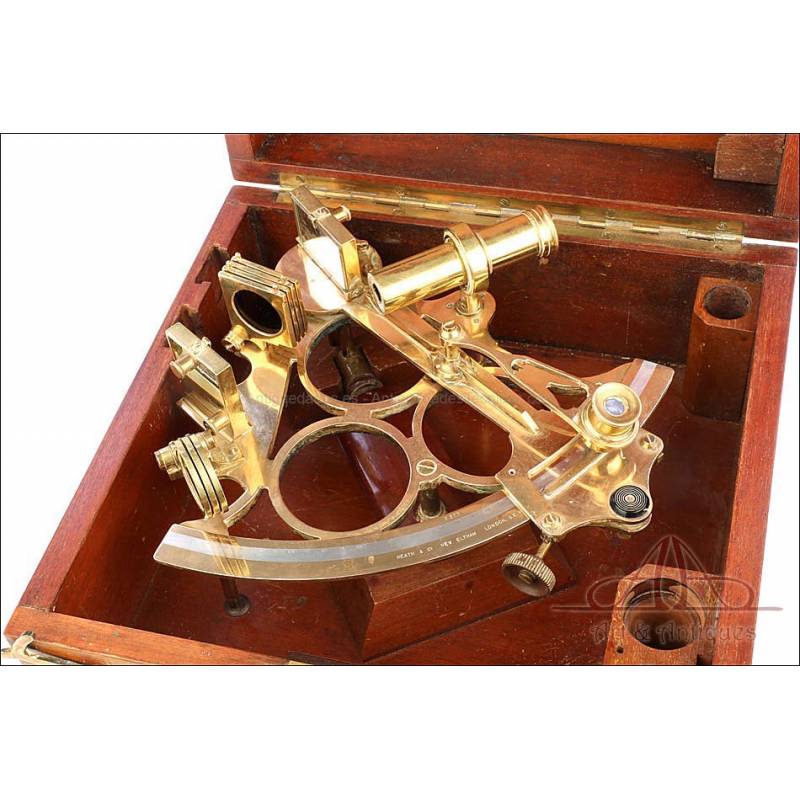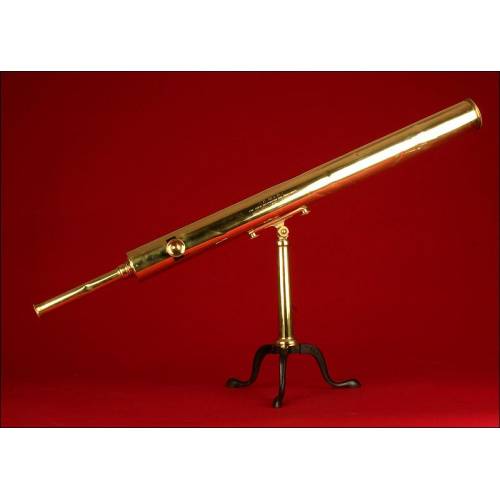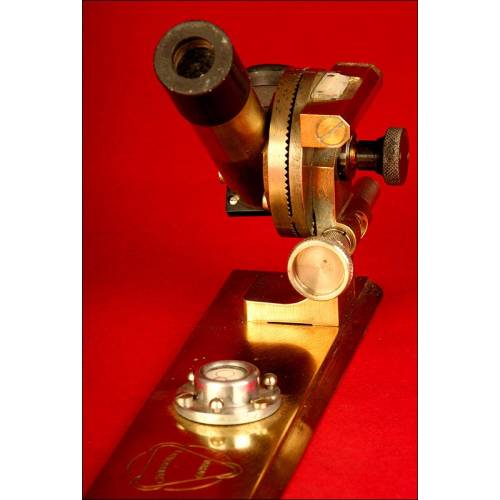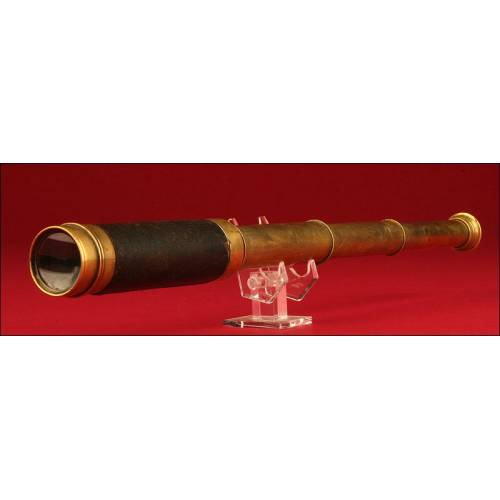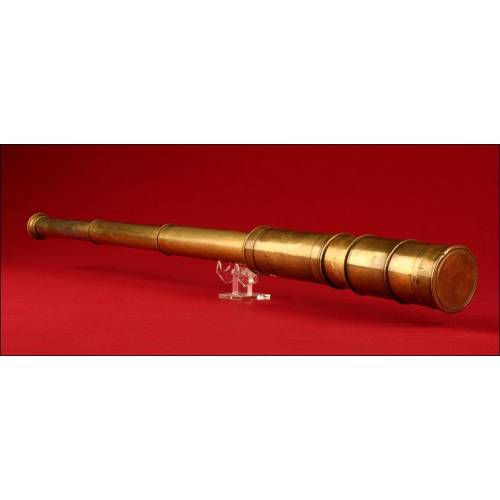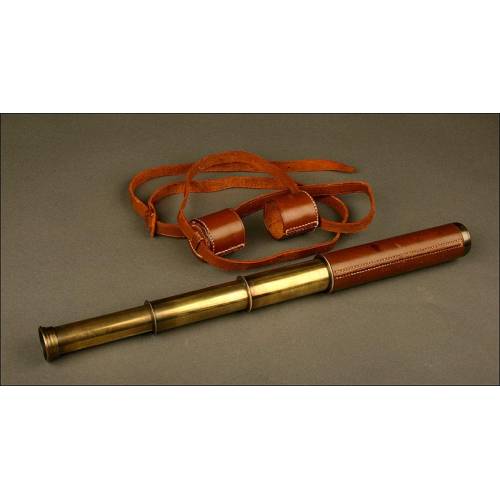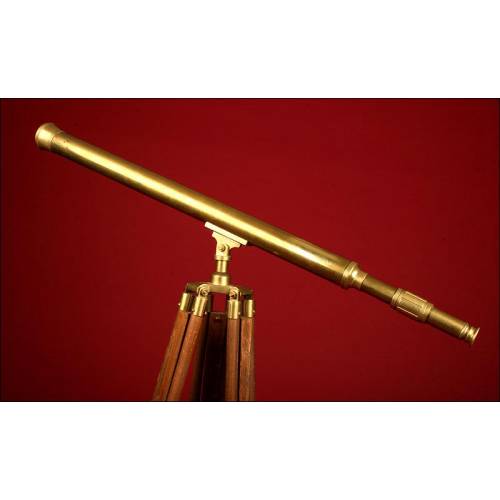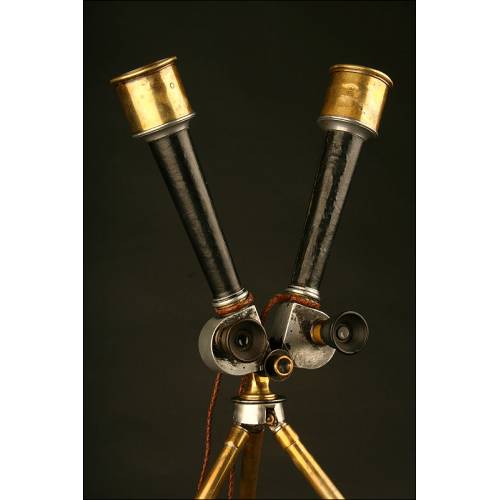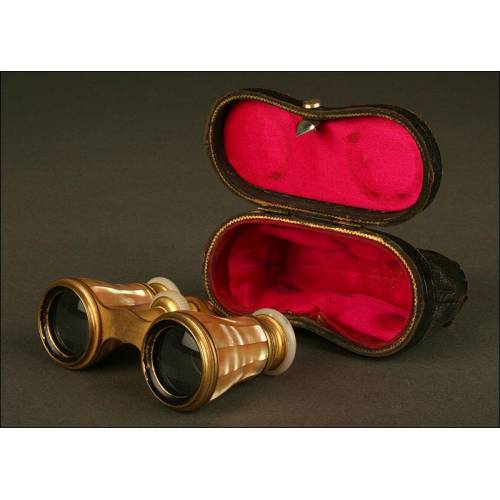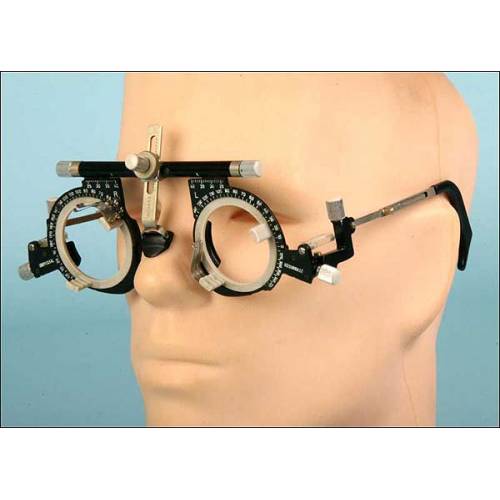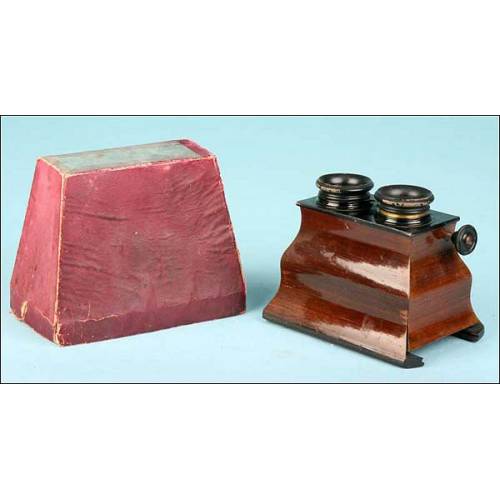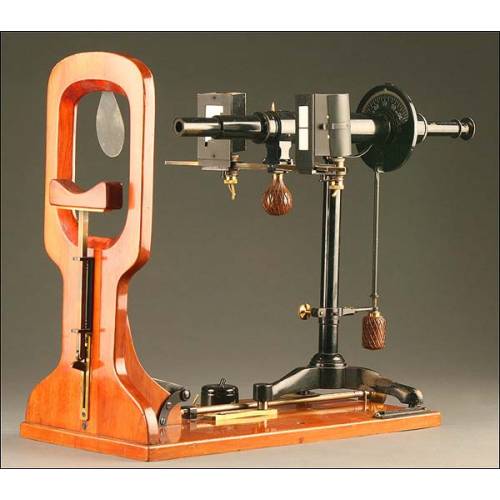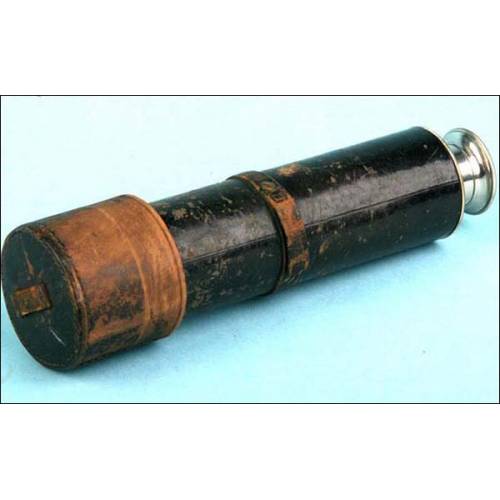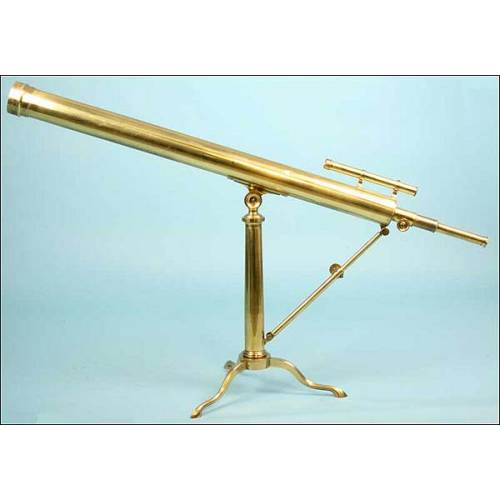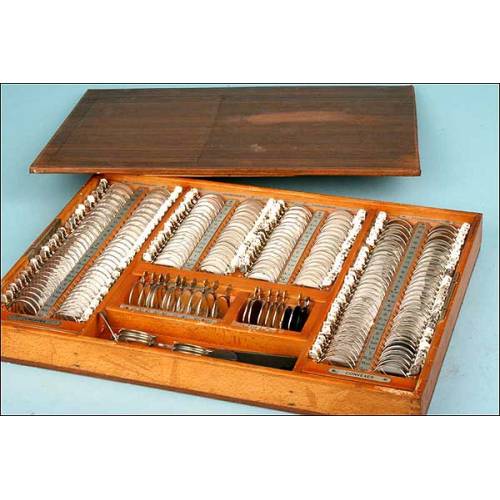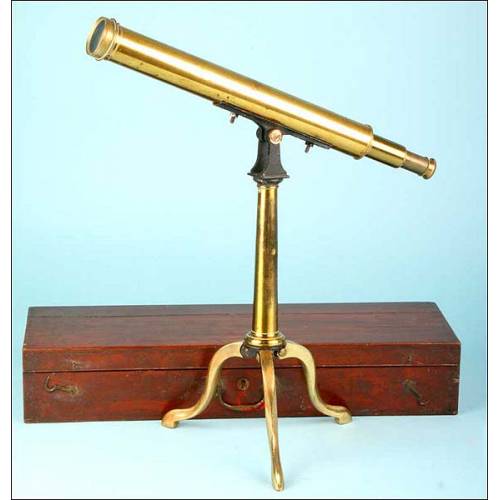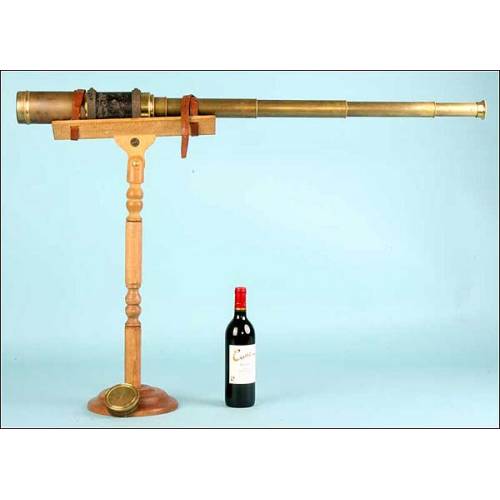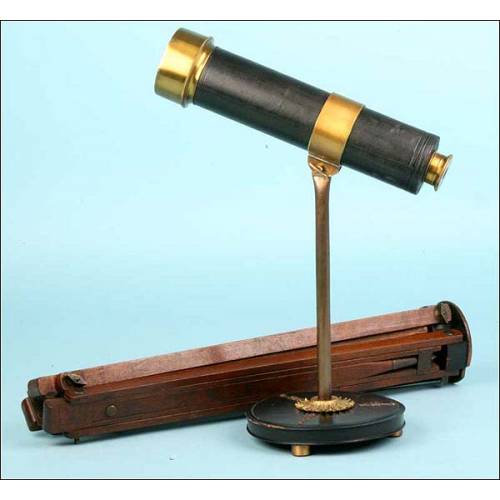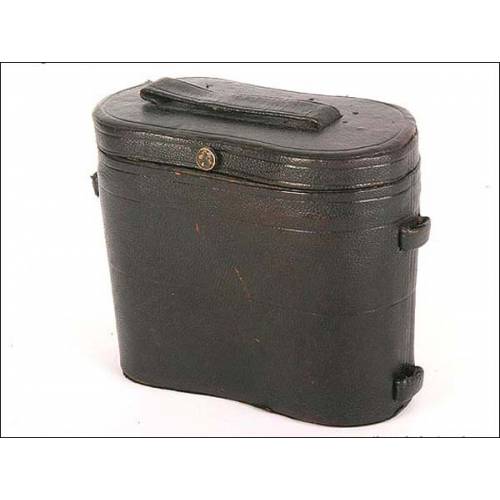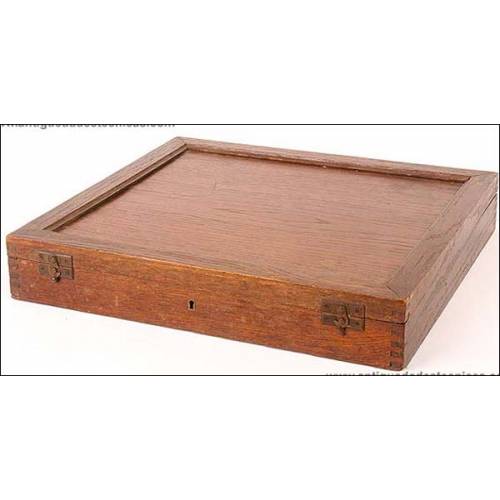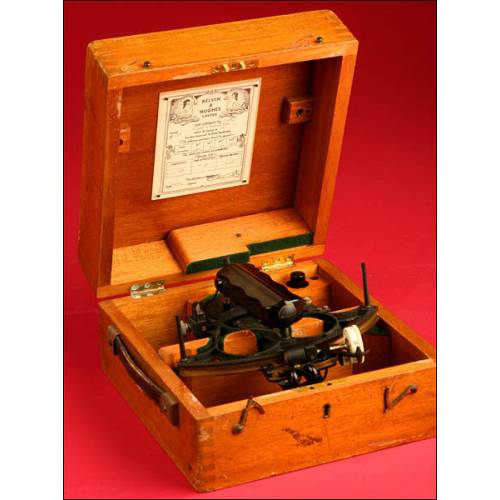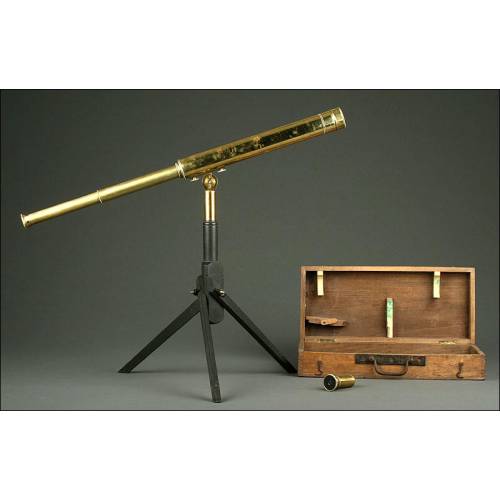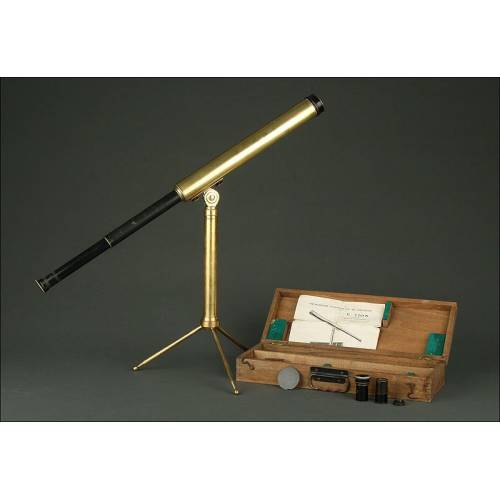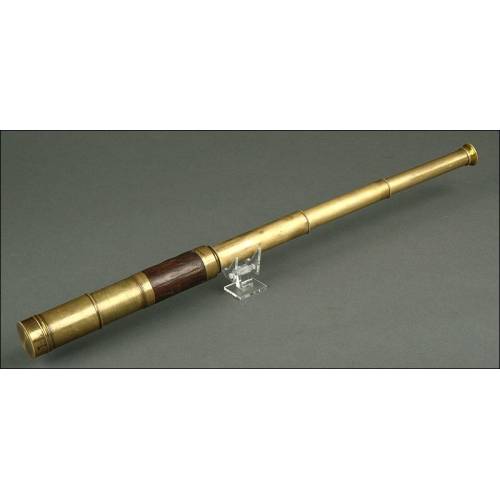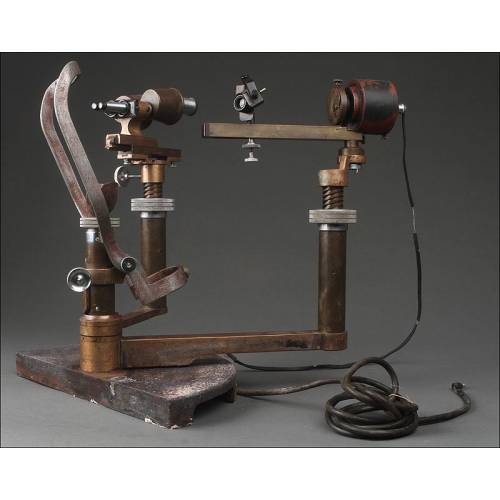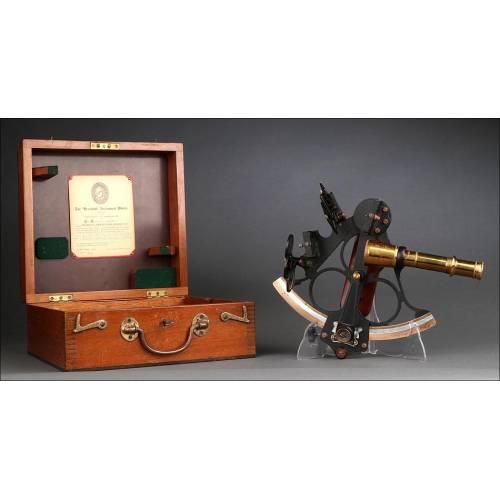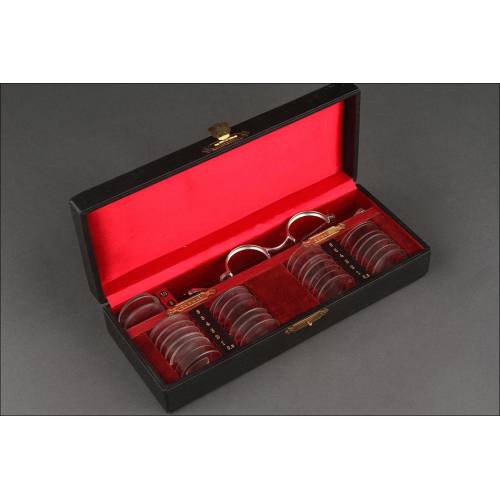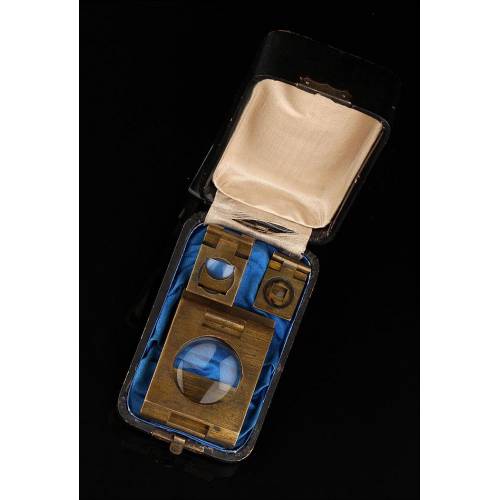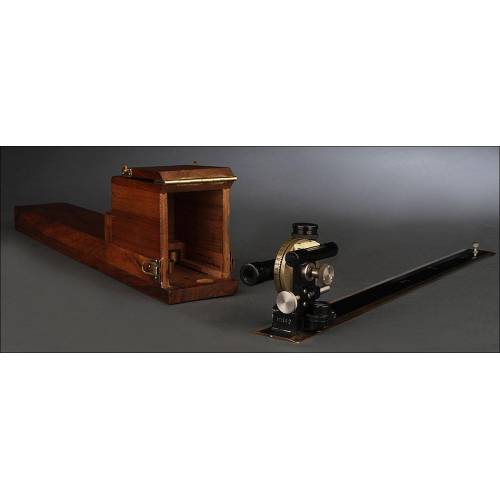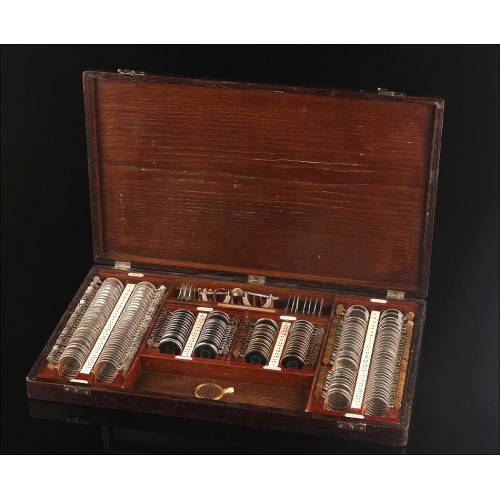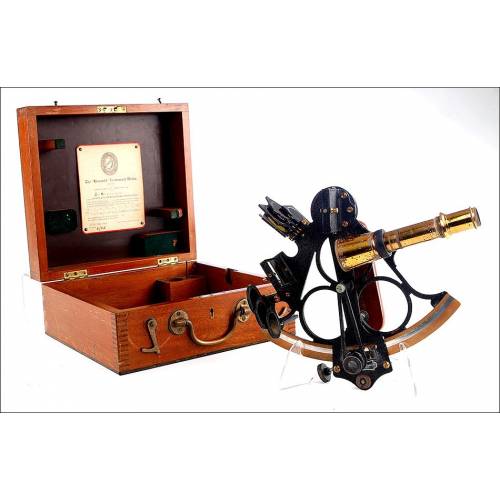D-845
Antique Heath & Co. Sextant. Mahogany Box. England, Circa 1900
Fine Heath & Co. sextant in good condition, more than one hundred years old. Solid mahogany storing box.
Sold!
Antique Heath & Co. sextant in its mahogany box, made in England circa 1900. This gorgeous instrument for marine use has survived to our days in very good condition and can still be used to calculate the latitude of the place where the user stands. The sextant is made of polished brass and keeps the original colored filters, as well as the mirrors and the adjustment screws. The metal is finely preserved, turning this item into a magnificent exhibition piece as well as a functional tool. The alidade bears the manufacturers name engraved in capital letters: HEATH & CO. NEW ELTHAM LONDON. S.E. 9. The solid-mahogany box where the sextant can be stored and protected is original too and remains in good condition. The corners show delicate dovetail joints, strong and quite decorative. At the center of the lid we can see an embedded brass plate free of any engraved inscription. This fantastic antique Heath & Co. sextant in its mahogany box preserves the great charm of early-20th-century ship instruments.Heath & Co. History Heath & Co., the scientific instrument manufacturing company, was founded in London by Thomas Heath in 1720. The workshop was located on the Strand in London their instruments were renowned for their high quality, a feature that was maintained for more than two centuries. Many of their workers would start their own instrument-manufacturing business later, such as Adams, Troughton or Watkins. In 1845 Thomas Heath II succeeded his father and changed the firms name for Heath & Co.; the firm kept on for decades and was active until the mid XXth century. Their three-ring-frame Hezzanith sextant was probably the most popular ever produced; Heath made thousands of units.

